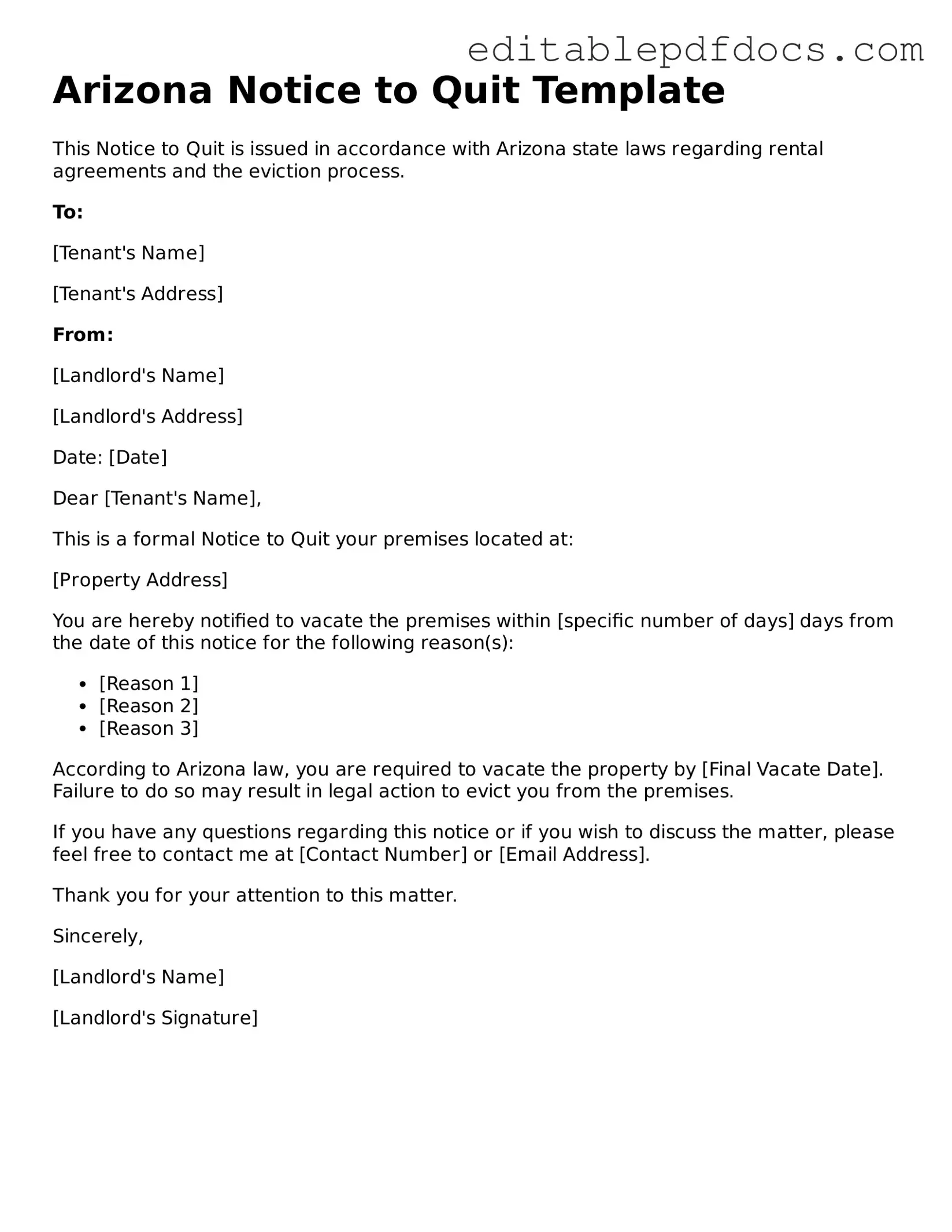Filling out the Arizona Notice to Quit form can be a straightforward process, but many people make common mistakes that can lead to delays or complications. One frequent error is failing to provide accurate tenant information. It’s crucial to include the full name of the tenant and the correct rental address. Omitting any details can cause confusion and may invalidate the notice.
Another mistake is not clearly stating the reason for the eviction. Arizona law requires landlords to specify the grounds for the Notice to Quit. Whether it’s for non-payment of rent or lease violations, being vague can lead to legal challenges. Clarity is key in ensuring that the tenant understands the situation and can respond appropriately.
Many individuals also overlook the importance of including the date the notice is served. This date is significant as it establishes the timeline for the tenant’s response. Without it, the notice may be considered incomplete. Always ensure that the date is clearly marked and accurate.
Additionally, some people fail to sign the form. A Notice to Quit must be signed by the landlord or an authorized representative. Without a signature, the notice lacks validity, and the eviction process cannot proceed. It’s a simple step, but one that is often forgotten.
Not providing proper delivery of the notice is another common pitfall. Arizona law outlines specific methods for delivering a Notice to Quit, such as personal delivery or certified mail. Skipping this step can result in the notice being deemed ineffective. Always follow the legal requirements for serving the notice to ensure it holds up in court.
Many landlords also neglect to keep a copy of the Notice to Quit for their records. This documentation can be vital if disputes arise later. Having a copy on hand can provide proof of service and the details of the notice, which can be helpful in legal proceedings.
Some individuals make the mistake of not allowing sufficient time for the tenant to respond. Arizona law stipulates the time frame in which a tenant must vacate after receiving a Notice to Quit. Failing to adhere to this timeline can complicate the eviction process and may require starting over.
Finally, some people fill out the form without consulting local laws or regulations. Each jurisdiction may have specific requirements or additional forms that need to be included. It’s essential to understand the local rules to avoid any missteps that could derail the eviction process.
